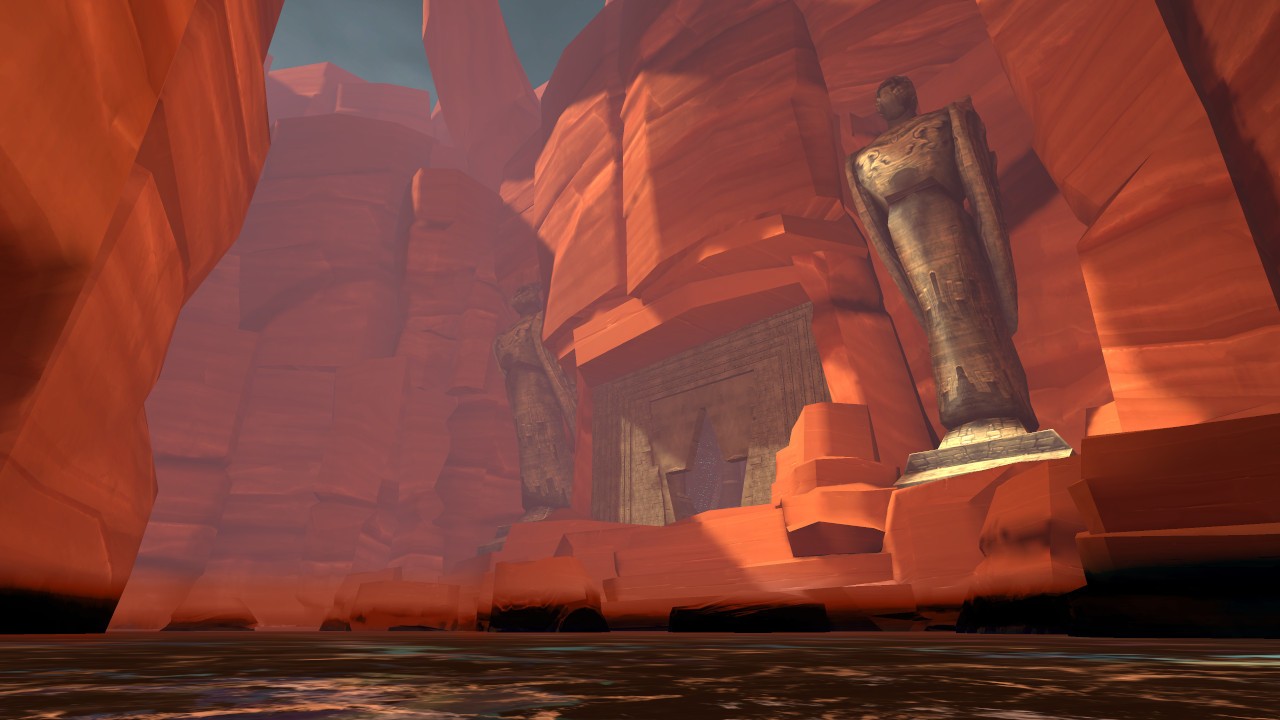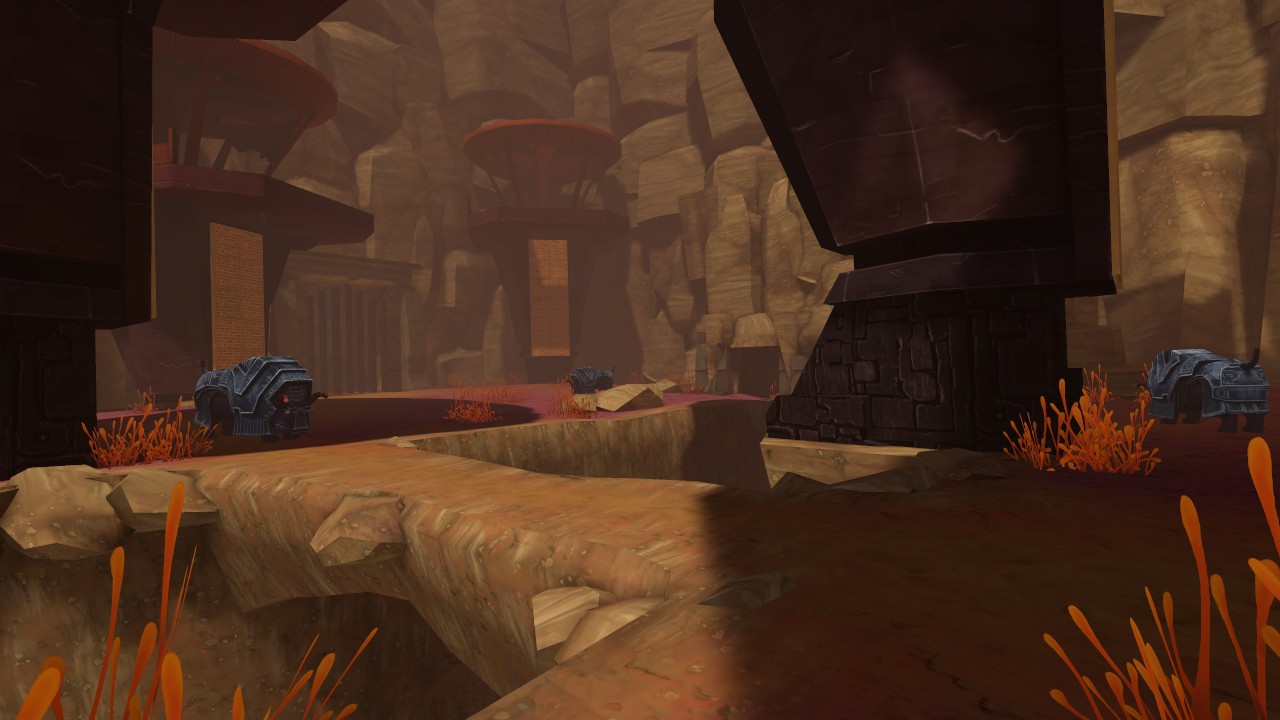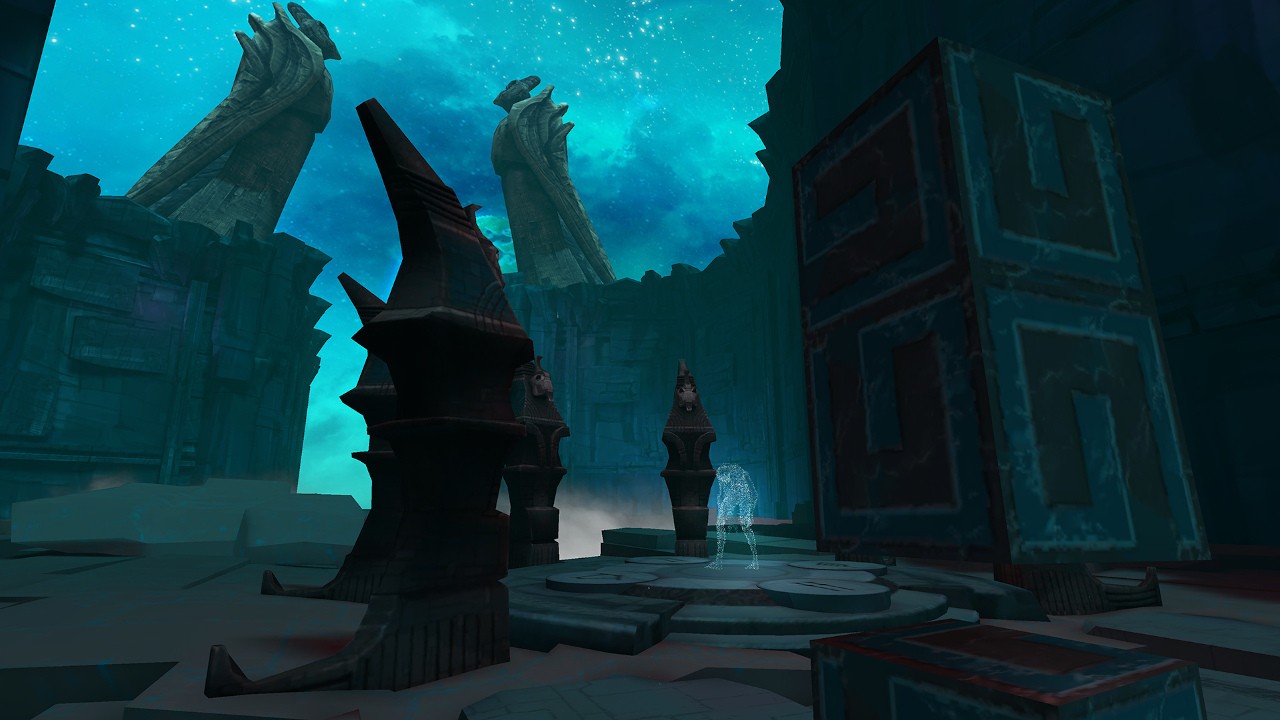
When I first fired up Eclipse: Edge of Light on the Nintendo Switch, I was reminded of countless gaming and film experiences which offered a similar narrative – a space traveller, stuck on an unknown alien planet after his ship crashes. I must admit I’m a big fan of the premise. The execution, though? Well, let’s talk about that.
Developed and published by White Elk LLC, Edge of Light was initially released as a VR title, which is a great platform for games with this premise. A lone explorer unlocking the secrets left behind by an alien civilization, you come across a mysterious object only known as an “Artefact”, which you can use to unlock doors, solve puzzles, destroy objects, and uncover the secrets of the planet’s history. Interestingly enough, the Artefact takes the form of a ball which I found pretty cool – it was like handling a mystical dodgeball of power. Since the game was originally released in a VR format, all the action takes place from a first-person perspective.

The transition to a more “traditional” gameplay format (a.k.a. flat screens and controllers) was successful for the most part – the game handles quite well. The controls are fairly simple and straightforward, and controlling the Artefact is mainly done with the trigger buttons on the Joycons. Speaking of triggers – there’re no guns on here though, despite being an FPS adventure. The Artefact is your Swiss Army Space Knife, and aside from exploration, a majority of the game is focused solely on puzzle solving. You’ll be using the Artefact mostly to unlock hidden passages and occasionally destroy obstacles in your path. Aside from the Artefact, your spacesuit likewise comes equipped with a boost function which will allow you to cross cliffs and a scan feature, which you can use to uncover hidden secrets about the planet’s past.
I found this rather refreshing, actually – instead of hunting down enemies with sheer power, I was treated to a simple but effective space adventure, with only a handful of instruments to help me find my way.
Going back to the puzzles, they guide you through Edge of Light. They work in tandem with the game’s mysterious narrative, which consists mostly of ominous messages inscribed on numerous objects found within caves, temples, and mountains throughout your adventure. I must say that this rather appealed to the sci-fi enthusiast in me, and the more I learned about the Artefact, the more intrigued I was about the story and what lay ahead of me. Without spoiling too much, I’ll say that the more you progress, the more grim the situation gets.

It’s not a perfect game though – the transition from VR to handheld/console is obvious at certain times. For example, early on in the game as I was gazing at the sky, I noticed that some visual elements such as the planets scattered above tend to look warped the closer they got to the edge of the screen. Likewise, panning the camera down reveals that your avatar lacks a body and instead only comes with a pair of arms. A logical result, of course, given the game’s VR origins, but a tiny part of me wishes that they’d added a body for better immersion into the story.
Graphically speaking, Edge of Light looks good for the most part. I understand that this is not some big AAA release, and as such there would be limitations to the in-game visuals. The in-game menus, for example, are a bit too simplistic, and could have used a bit more animation and flair. Additionally, there are times when the polygonal nature of the game shows through, and this may be somewhat of an issue for gamers looking for a more polished first-person adventure. I noticed that there were also instances when the game would slow down a bit, most especially when there are multiple graphical elements present in a certain area, for example. The audio is tight though – the ambient music and the sound effects add to the experience, and made my journey more enjoyable, though I would have preferred maybe some voice acting every now and then.
Perhaps another downside to the game is the short campaign/story and the lack of a save feature, as it opts for an auto-save function based on your progress in the story.
In closing, I’ll say that Eclipse: Edge of Light is a good game. I was looking for a sci-fi romp in a desolate planet filled with mystery, and it offered just that. Although the game has its shortcomings, it’s a title worth checking out and playing if you can overlook these limitations, and enjoy the game for what it is – a straightforward adventure through uncharted territory.
REVIEW CODE: A complimentary Nintendo Switch code was provided to Bonus Stage for this review. Please send all review code enquiries to press@4gn.co.uk.
Subscribe to our mailing list
Get the latest game reviews, news, features, and more straight to your inbox
Thank you for subscribing to Bonus Stage.
Something went wrong.
Eclipse: Edge of Light Review
-
Gameplay - 7/10
7/10
-
Graphics - 7/10
7/10
-
Sound - 7.5/10
7.5/10
-
Replay Value - 6.5/10
6.5/10
User Review
( votes)Overall
Summary
Despite some limitations, Eclipse: Edge of Light manages to provide a unique and entertaining adventure on a mysterious, alien world.
Pros
- The premise is interesting.
- Gameplay is simple and straightforward.
Cons
- Some graphical limitations.
- A manual save feature would have been nice.





